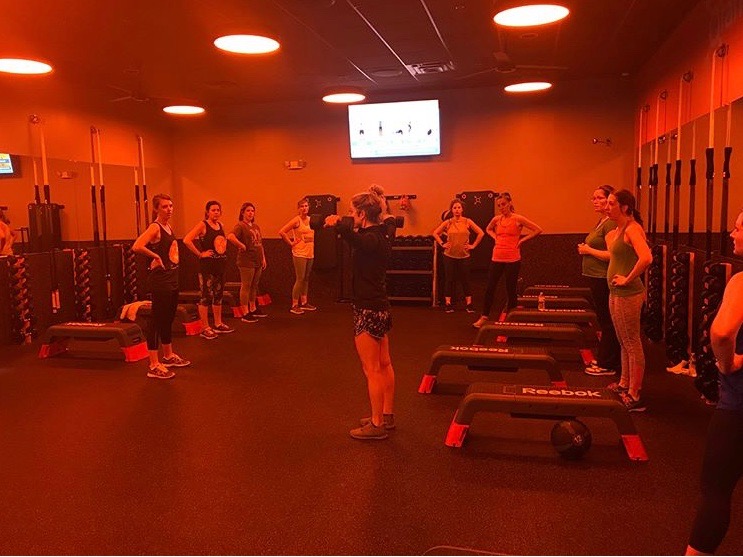
You don't have to be intimidated by the gym. There are steps you can take before you start your workout. Warm up first before you begin to exercise. By doing a warm-up, you'll prepare your body for the exercise and lower the risk of injuries, including pulling muscles. You can also reduce lactic acid buildup which can cause cramps. It is important that you stretch and walk in the exact same spot throughout your exercise.
Don't over-extend yourself. Certain exercises can be dangerous without a spotter. Before trying new moves, make sure you ask for one. Avoid pushing yourself during your workout. This will only make it worse. Instead, take a break after your workout and reward yourself with a treat. You can always go back later and continue your workout. Start early and work up the weight if you are a beginner.

Do cardio. Cardiovascular exercise is an essential part of the gym. When you're working out, make sure to alternate between the upper and lower body. A half-hour session is a good idea for those who are new to the sport of working out. You should take a break if your workouts become repetitive or stale.
To lift heavy weights, you should also consider dumbbells. Dumbbell goblet pushingups are named after the fact you're holding a cup. These exercises are great for building a strong body. The dumbbell Romanian deadlift is a cousin to the bodyweight squat. These exercises can help you build a strong, resilient body. These exercises can be integrated into your daily life.
It's a good idea to do a few exercises if you are new to the gym. You can then work on your upper-body with dumbbells, weightlifts, and other exercises. Because your lower body is the best place to build muscle mass, you should also focus on decreasing body fat. To get toned and lean, you will need to lift weights on both your upper and lower bodies. For a more toned upper body, aim for sculpted.

Try different equipment if you aren't sure where to begin your workout. Cable machines are great for targeting multiple muscle groups. A leg press is a great exercise to build muscle in your legs. It targets quads as well as hamstrings. Cannonball-shaped weights with handles called kettlebells can be used for strength training and cardio.
After your workout is over, warm-ups and cool-downs should be done. Your body does not warm up and cool off immediately so allow it to rest. There are many options for freeweights. One is TRX (Training with your own weight), which allows you use your body weight as a suspension system to lift. The most common piece of equipment is the treadmill. It allows you to set the intensity of your workout.
FAQ
How to measure body weight?
The best way to measure body fat is with a Body Fat Analyzer. These devices measure the body fat percentage in people who wish to lose weight.
What is the problem with BMI?
BMI is the acronym for Body Mass Index. It measures body fat based upon height and weight. The following formula is used to calculate BMI:
Add weight in kilograms to height in meters squared.
The result is expressed in a number between 0 - 25. Scores between 0 and 25 indicate obesity. A score of 18.5 indicates overweight. A score of 23 indicates obesity.
A person who is 100kg and 1.75m tall will have a BMI 22.
What is the difference between calories and kilocalories in food?
Calories refer to units that are used for measuring the energy in food. Calories is the unit of measurement. One calorie contains the energy needed to raise the temperature of one gram of water by one degree Celsius.
Kilocalories refer to calories in another term. Kilocalories are measured in thousandths of a calorie. For example, 1000 calories equals one kilocalorie.
Statistics
- WHO recommends consuming less than 5% of total energy intake for additional health benefits. (who.int)
- According to the Physical Activity Guidelines for Americans, we should strive for at least 150 minutes of moderate intensity activity each week (54Trusted Source Smoking, harmful use of drugs, and alcohol abuse can all seriously negatively affect your health. (healthline.com)
- In both adults and children, the intake of free sugars should be reduced to less than 10% of total energy intake. (who.int)
- WHO recommends reducing saturated fats to less than 10% of total energy intake; reducing trans-fats to less than 1% of total energy intake; and replacing both saturated fats and trans-fats to unsaturated fats. (who.int)
External Links
How To
What does the "vitamins” word mean?
Vitamins are organic compounds found naturally in food. Vitamins are essential for our bodies to absorb nutrients from the foods we eat. Vitamins cannot come from the body so food must provide them.
There are two types: water-soluble and fat-soluble vitamins. Water-soluble vitamins dissolve readily in water. Examples include vitamin C,B1 (thiamine), B2 (riboflavin), B3 (niacin), B6 (pyridoxine), folic acid, biotin, pantothenic acid, and choline. The liver and fat soluble vitamins are stored within the liver and in fatty tissue. Examples include vitamin D, E, K, A, and beta carotene.
Vitamins are classified according to their biological activity. There are eight main groups of vitamins.
-
A - Essential for healthy growth and health maintenance.
-
C - important for proper nerve function and energy production.
-
D - Vital for healthy bones and teeth
-
E is required for good vision and reproduction.
-
K - required for healthy muscles and nerves.
-
P - Essential for strong bones and teeth.
-
Q - aids digestion, absorption and absorption iron
-
R - Red blood cells are made from red blood cells.
The recommended daily intake (RDA), of vitamins varies with age, gender and physical condition. RDA values are set by the U.S. Food and Drug Administration (FDA).
For example, the RDA for vitamin A is 400 micrograms per dayfor adults 19 years or older. However, pregnant women need 600 micrograms per day because it is important for fetal development. Children ages 1-8 require 900 micrograms per day. Infants under one year of age require 700 micrograms per day, but this amount decreases to 500 micrograms per day between 9 months and 12 months of age.
Children aged 1-18 years need 800 micrograms daily, while children overweight require 1000 micrograms per days. Children who are severely obese or underweight will need 1200 micrograms each day.
Children between 4 and 8 years old with anemia will need 2200 micrograms daily of vitamin C.
2000 micrograms are required daily for good health in adults over 50. Mothers who are pregnant, nursing, or have a high nutrient need will require 3000 micrograms a day.
Adults over 70 require 1500 micrograms each day, since they lose around 10% of their muscle mass every decade.
Women who are pregnant or lactating need more than the RDA. Pregnant mothers need 4000 micrograms per daily during pregnancy and 2500 after giving birth. Breastfeeding mothers require 5000 micrograms daily when breast milk production is occurring.